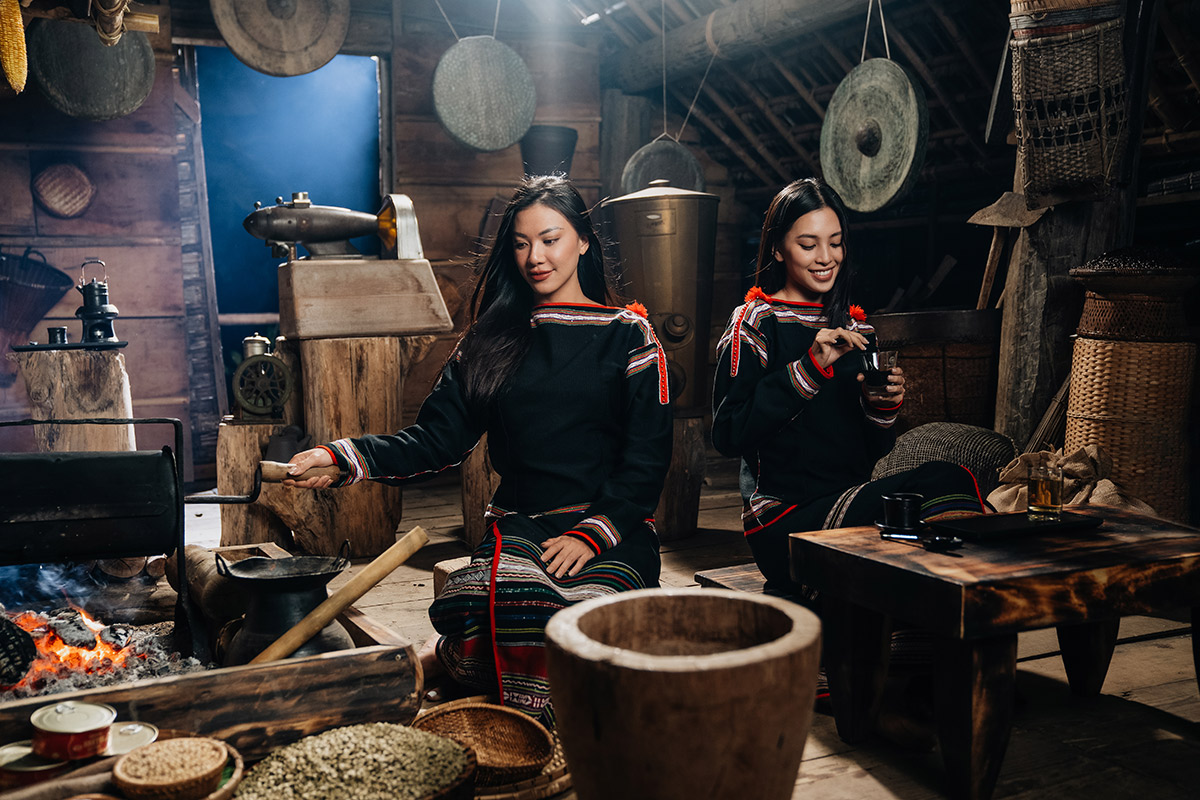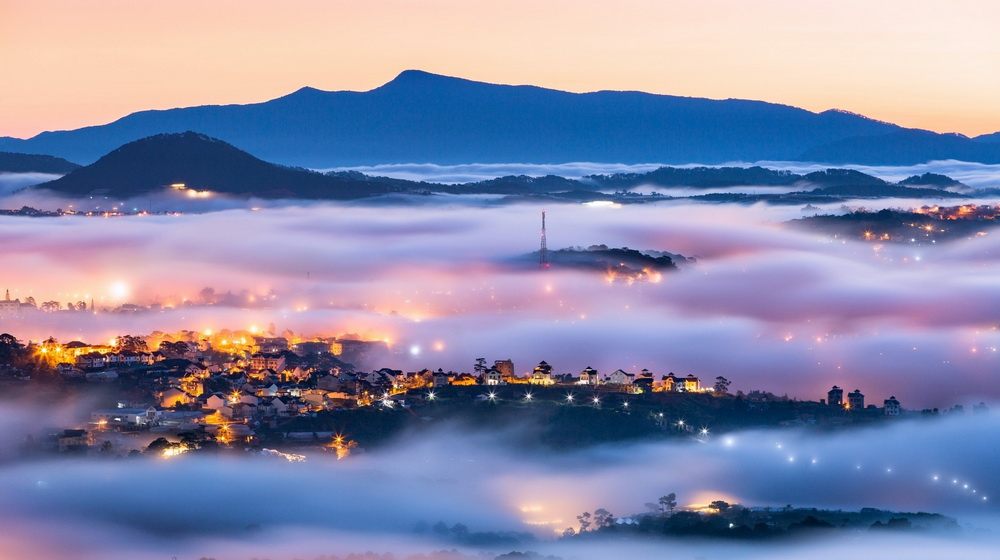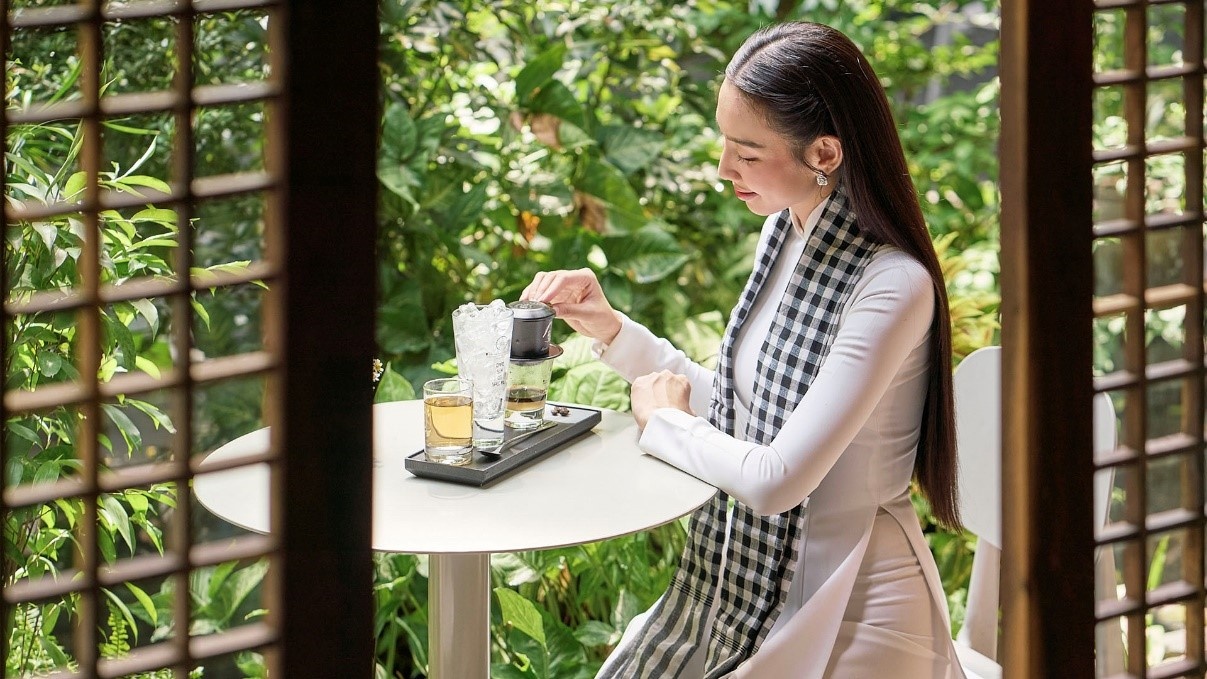
In the heart of Vietnam’s Central Highlands, where rolling hills meet rising mists and the air carries the faint hum of cicadas, coffee isn’t just a drink—it’s a way of life. From the volcanic soils of Đắk Lắk to the pine-scented valleys of Lâm Đồng, this region is often called “the coffee land” of Vietnam. Here, every cup tells a story—of land and labor, of tradition and transformation, of the delicate balance between nature and craft.

Đắk Lắk, with Buôn Ma Thuột as its capital, is the undisputed coffee capital of Vietnam. For decades, this province has been the beating heart of the country’s coffee production, supplying much of the robusta beans that fuel cafés from Hanoi to Saigon—and increasingly, the world.

But Đắk Lắk is not just about quantity. It’s about identity.
Drive through the countryside in early morning light, and you’ll find yourself surrounded by endless rows of coffee trees, their dark green leaves shimmering beneath a sky brushed with mist. Smallholder farmers—many from ethnic minorities such as the Ê Đê and M’nông—tend to their fields by hand, guided by ancestral rhythms rather than modern machinery.
The volcanic red soil here is rich in minerals, the altitude perfect for nurturing beans dense in flavor and caffeine. When harvest season comes, from November to January, the highlands burst into color as cherries ripen into deep crimson jewels. Women in traditional garments can be seen spreading coffee beans across courtyards to dry, a patchwork of red, brown, and gold under the tropical sun.

In Buôn Ma Thuột city, coffee is both heritage and pride. It’s impossible to walk more than a few blocks without encountering a café—each with its own character, aroma, and philosophy.
Trung Nguyên Legend Café is a must-visit, not just for its iconic brand but for the way it celebrates Vietnamese coffee culture on a grand scale. Visitors can explore the World Coffee Museum, a stunning architectural space blending traditional Central Highlands longhouses with modern design. Inside, ancient coffee tools, roasting equipment, and curated exhibitions trace the global journey of the bean—from Ethiopia to Vietnam.

But to truly feel the soul of Buôn Ma Thuột, seek out its local-style cafés, where coffee drips slowly through a metal phin, the sound punctuated by soft conversation and the occasional hum of motorbikes. Try a cup of cà phê sữa đá (iced coffee with condensed milk)—intensely bold, bittersweet, and satisfyingly creamy. Or go deeper into tradition with cà phê chồn (weasel coffee), where beans are fermented naturally through the digestive process of civet cats, resulting in an exceptionally smooth and aromatic brew.
Continue your journey southward, and the landscape begins to shift. The dense forests of Đắk Lắk give way to rolling hills, winding passes, and pine valleys. You’ve entered Lâm Đồng, home to Đà Lạt, the “City of Eternal Spring.” Here, the altitude climbs above 1,500 meters, and the cooler climate cradles the delicate arabica beans that are transforming Vietnam’s coffee scene.

If Đắk Lắk is tradition, Lâm Đồng is innovation.
The farmers here are younger, more experimental. They talk about fermentation techniques, honey processing, and single-origin lots. Many collaborate with specialty roasters in Hanoi, Ho Chi Minh City, and even abroad. In the misty highlands of Cầu Đất, Lang Biang, and Lạc Dương, micro-farms are quietly redefining what Vietnamese coffee can be.
Đà Lạt’s charm lies not only in its landscapes but in the cafés that blend creativity with craftsmanship. Step into La Viet Coffee, and you’ll find a roastery buzzing with energy—baristas explaining flavor notes, travelers sipping cold brews, and the scent of freshly roasted arabica filling the air. Their beans, sourced from nearby farms, are roasted to highlight subtle notes of citrus, chocolate, and nuts—proof that Vietnam’s coffee potential goes far beyond the robusta stereotype.

Just down the street, The Married Beans offers an intimate, almost meditative coffee experience. They focus on hand-brewed pour-overs, where every drop is a conversation between grower and drinker. Each cup is an exploration of altitude, processing, and terroir—a world away from the dense sweetness of the classic phin coffee, yet equally soulful.
For those who prefer atmosphere as much as aroma, An Café and Tiệm Cà Phê Túi Mơ To embody Đà Lạt’s poetic side. Perched on hillsides overlooking flower gardens and pine forests, they invite visitors to linger—to sip slowly, breathe deeply, and let time stretch like the soft drizzle of the highland rain.
Whether you’re watching the sunrise over Buôn Ma Thuột’s plantations or losing yourself in the mist of Đà Lạt, one truth becomes clear: coffee here is not just a beverage. It’s community. It’s connection. It’s the bridge between highland farmers and city dreamers, between the old phin and the modern espresso machine.

For locals, a cup of coffee is the rhythm of life itself—morning ritual, afternoon companion, evening muse. It’s shared among friends, offered to guests, and savored in solitude.
The best time to visit is from November to March, when the air is crisp and the harvest is in full swing. Don’t miss:
Farm tours around Buôn Ma Thuột or Cư M’gar to see how beans are grown, picked, and processed.
A visit to Cầu Đất Farm in Đà Lạt to explore coffee production amid breathtaking highland views.
Tasting both robusta (Đắk Lắk’s strength) and arabica (Lâm Đồng’s pride) to understand their distinct characters.

In the end, traveling through Đắk Lắk and Lâm Đồng is more than a coffee journey—it’s a journey through Vietnam’s evolving identity. Each sip holds a dialogue between land and culture, tradition and change.
So, when you lift a cup of Vietnamese coffee to your lips—whether strong and earthy or light and floral—pause for a moment. Taste the mist, the soil, the stories of the highlands. You’re not just drinking coffee; you’re drinking the spirit of Vietnam itself.
